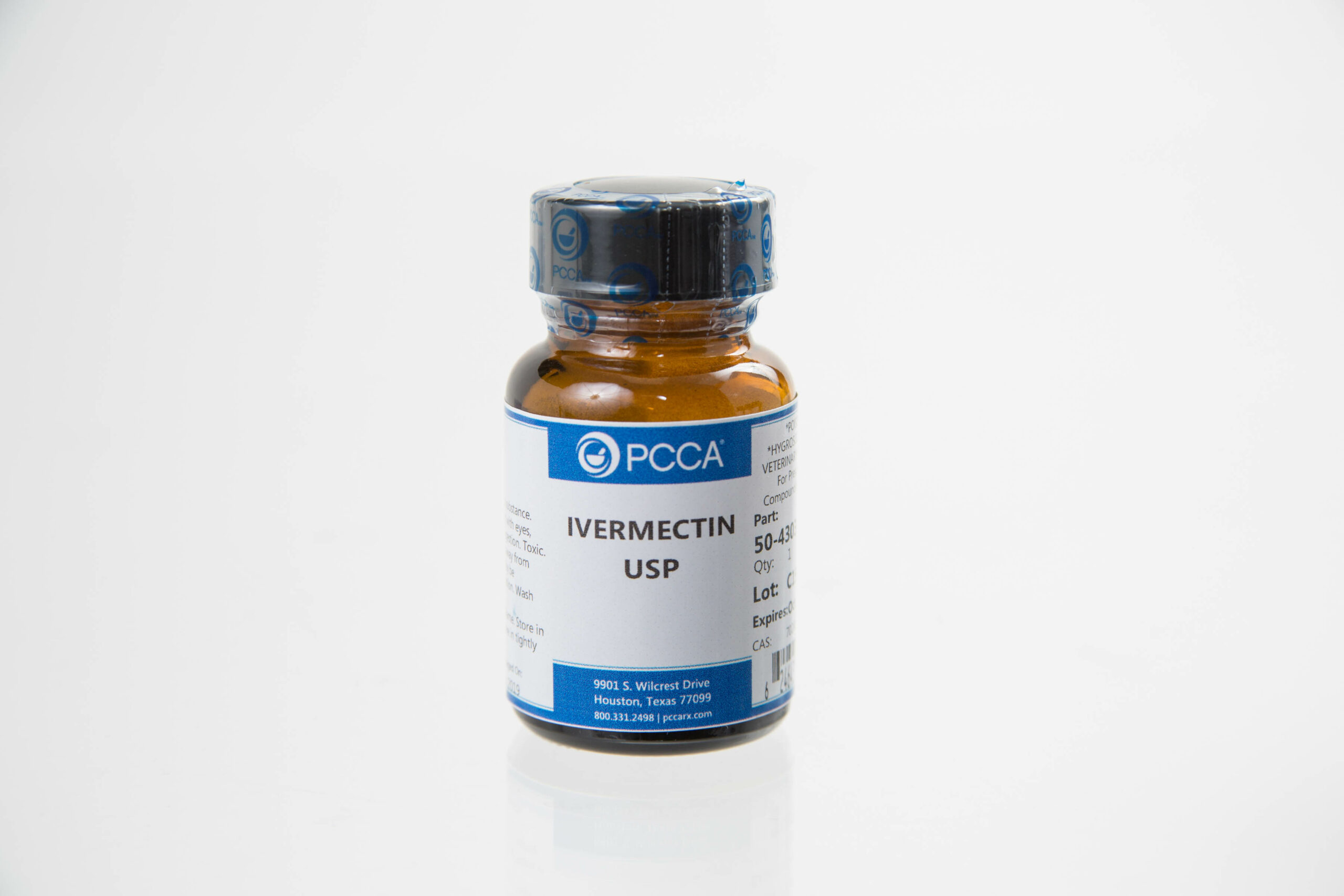What we need to know about Ivermectin?
Awarded a Nobel Prize in Physiology and Medicine in 2015, Ivermectin (IVM) is one of the most important antiparasitic drugs in veterinary and human medicine. It is a broad-spectrum antiparasitic medication, usually for oral administration(1).
Ivermectin is mainly used to treat onchocerciasis or also known as river blindness, and strongyloidiasis (a certain type of diarrhea). It is used against worm infections such as ascariasis, trichuriasis, and enterobiasis(2). Veterinarians also commonly administer ivermectin for dogs with certain types of parasites in their bodies.
It was first marketed in the U.S. under the brand name Stromectol as the tablet form. But in 2012, the topical formulation was approved and marketed as Sklice, which is used to treat head lice infestations for patients ages 6 months and older(3).
Moreover, the topical cream form is used to treat rosacea lesions. Rosacea is a skin disease that causes redness and pimples around the face. It is marketed in the U.S. under the brand name Soolantra(4).
Ivermectin is best described for its activity on chloride channels, specifically those gated by glutamate in parasitic worms (nematodes). However, understanding how it works remains incomplete(5).
Glutamate-gated Chloride channels (GluCls) are not present in the vertebrates (e.g., mammals). This is thought to confer that Ivermectin is safe for humans and animals.
GluCls are found in the motor neuron commissures, nerve cords, and pharyngeal neurons of the parasitic worms. When Ivermectin binds to the GluCls on these sites, it negatively affects the motility, feeding, and reproduction by paralyzing and killing it(6).
The result of these mechanisms is the elimination, if not all, of lessening the number of worms in the blood, skin, and eyes(7).
Ivermectin is not an over-the-counter (OTC) medication. It is only available with a doctor’s prescription.
Is it safe to take CBD with Ivermectin?
Upon ingestion, Ivermectin is widely distributed in the body due to its high lipid solubility; but the studies on its metabolism are scarce.
Most drugs (if not all) are metabolized in the liver, and the majority of the drug interactions are broken down by the CYP450 enzyme family found in the liver. These enzymes could either inhibit (suppress) or induce (showing higher activity) drug activity(8).
Ivermectin is extensively metabolized by the human liver, especially the cytochrome P450 (CYP450) enzyme system. The predominant member (isoform) of this enzyme system that is mainly responsible for the breakdown of Ivermectin is cytochrome P-4503A4 (CYP3A4)(9).
The CYP3A4 bio transforms the Ivermectin into ten metabolites, which are mostly hydroxylated and demethylated derivatives(10).
On the other hand, cannabis has been explored for years for its medicinal use. It also raises the question if cannabis could be a good alternative in treating parasitism.
There are various forms of cannabis that have varying THC (the form that has a psychoactive effect) and CBD ratios. The final drug interaction would either be additive, synergistic, or antagonistic (with harmful effect)(11).
As the main interest in this article, cannabidiol or CBD (cannabis used for medicinal purposes) is metabolized by the enzyme group CYP450 in the liver.
It is known that CBD is a potent inhibitor of CYP3A4. Cannabidiol may decrease the excretion rate of Ivermectin, which could result in a higher serum level(12).
It means that since Ivermectin is excreted by the body through the liver, there is a possibility of liver damage if there is a high level of this drug, although mild. In short, the use of Ivermectin with CBD could be damaging to the liver.
Can CBD replace Ivermectin?
There is no published or any known research that suggests CBD as a suitable replacement for any antiparasitic/anthelmintic drugs. However, there are studies that show the use of cannabis to combat parasitism.
In a study conducted on Aka men in Congo, although the results indicated no significant relationship between cannabis use against protection from worms, it is notable that cannabis users carry fewer intestinal worms than non-cannabis users. Whether or not this plant is effective, it is not clear(13).
Moreover, there are still plenty of communities that deliberately use cannabis to fight parasitic pests for their livestock. These practices are still common in Indian villages such as Uttarakhand(14), Himachal Pradesh(15), and Anda Prades(16). Additionally, in Uganda, wherein poultry is a vital source of meat and eggs, they use multiple herbs, including cannabis, to fight off parasitic infections(17).
Still, throughout the years, studies that focus on cannabinoids as a sole anthelmintic drug to address parasitism are either scarce or not published at all. These areas need further studies.
Until then, if there is still no concrete evidence that suggests CBDs to be used as antiparasitic, it is always better to avoid using it together with Ivermectin as it might have adverse effects, especially to the liver.
Conclusion
Ivermectin has been used to treat and control parasitic infections caused mainly by parasitic worms known as nematodes (except tapeworms) for more than 35 years(18).
CBD, on the other hand, has been studied for years for its medicinal efficacy. CBD may contain anthelmintic properties as it has been used in some areas to treat parasitism.
However, there are no known studies that recommend the use of CBD as a replacement for anthelmintics, especially as a substitute for Ivermectin. In fact, CBD could be an inhibitor of the CYP450 enzymes in the liver that may result in higher blood serum levels, which could lead to a potential cause of liver damage.
With the potential threat that it poses to the liver, it is best to avoid using Ivermectin and CBD together. Consult a doctor expert on cannabis before using any of these to avoid medical complications.
References:
- Laing, R., Gillan, V., & Devaney, E. (2017). Ivermectin – Old Drug, New Tricks?. Trends in parasitology, 33(6), 463–472. https://doi.org/10.1016/j.pt.2017.02.004
- Mayo Clinic. (01 February, 2020). Ivermectin (Oral Route). Retrieved from: https://www.mayoclinic.org/drugs-supplements/ivermectin-oral-route/description/drg-20064397
- Drug Bank. (13 June, 2005). Ivermectin. Retrieved from: https://www.drugbank.ca/drugs/DB00602
- Mayo Clinic. (01 February, 2020). Ivermectin (Topical Application Route). Retrieved from: https://www.mayoclinic.org/drugs-supplements/ivermectin-topical-application-route/description/drg-20075441
- Laing R., et al. op. Cit.
- ibid.
- Mayo Clinic. (01 February 2020). Ivermectin (Oral Route). op. cit.
- Thomas, Liji. (2020, March 02). How cannabis interacts with medications. News-Medical. Retrieved on April 16, 2020 from https://www.news-medical.net/news/20200302/How-cannabis-interacts-with-medications.aspx.
- ibid.
- González Canga, A., Sahagún Prieto, A. M., Diez Liébana, M. J., Fernández Martínez, N., Sierra Vega, M., & García Vieitez, J. J. (2008). The pharmacokinetics and interactions of ivermectin in humans–a mini-review. The AAPS journal, 10(1), 42–46. https://doi.org/10.1208/s12248-007-9000-9
- Thomas, L. op. cit.
- Ibid.
- Roulette, C. J., Kazanji, M., Breurec, S., & Hagen, E. H. (2016). High prevalence of cannabis use among Aka foragers of the Congo Basin and its possible relationship to helminthiasis. Retrieved from https://www.ncbi.nlm.nih.gov/pubmed/26031406
- N. C. Shah (2004) Indigenous Uses and Ethnobotany of Cannabis sativa L. (Hemp) in Uttaranchal (India), Journal of Industrial Hemp, 9:1, 69-77, DOI: 10.1300/J237v09n01_07
- PDF. Sharma, P., Vidyarthi, S., & Nath, S. (n.d.). Retrieved from: https://hpccc.gov.in/PDF/Biodiversity/Floral/Study%20on%20Medicinal%20Phytodiversity%20of%20Janjehli,%20Rohanda%20and%20adjoining%20Areas,%20Himachal%20Pradesh,%20North%20Western%20Himalayas.pdf
- PDF. Padal, B., Satyavathi, K., Sandhyadeepika D. Published 30 December 2014. Retrieved From: ttp://www.bmrjournals.com/uploads/459e3c089ea6ef2c1db4e54ea2f43270af83c7946a85d272d265ef347a582942/Manuscript/2015-01-27_10-22-25-PMEBM14%2010.pdf
- Joseph, Byaruhanga & Dickson, Tayebwa & Eneku, Wilfred & Afayoa, Mathias & Mutebi, Francis & Ndyanabo, Susan & Kakooza, Steven & Acai, James & Tweyongyere, Robert & Wampande, Eddie & Vudriko, Patrick. (2017). Retrospective study on cattle and poultry diseases in Uganda. International Journal of Veterinary Science and Medicine. 5. 10.1016/j.ijvsm.2017.07.001.
- Laing R., et al. op. Cit.













